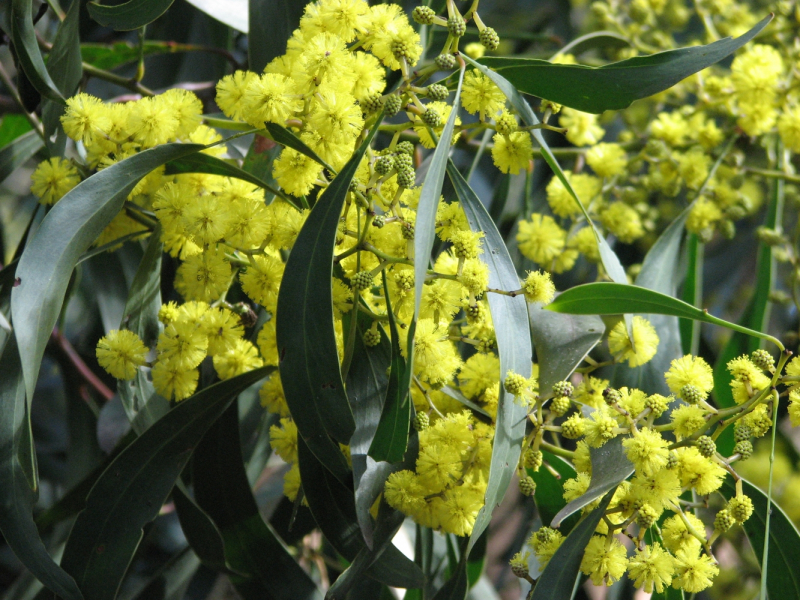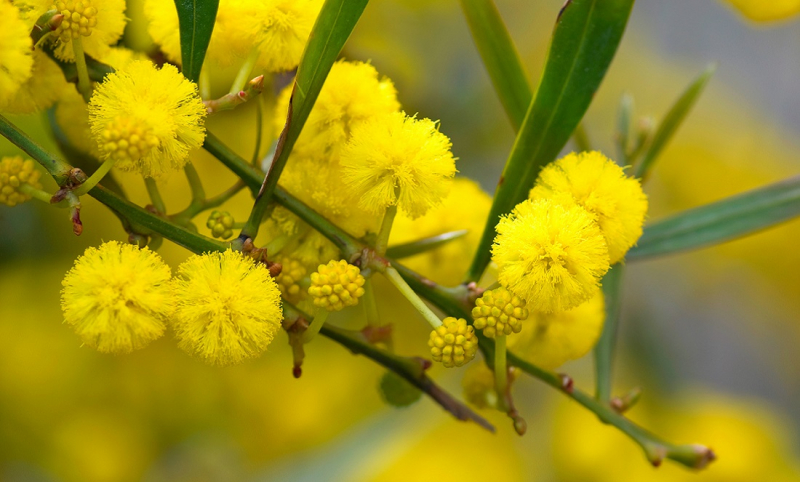Golden Wattle
Acacia pycnantha, most commonly known as the Golden Wattle, is a tree of the family Fabaceae native to southeastern Australia. It bears phyllodes (flattened leaf stalks) instead of real leaves and can reach a height of 8 m (26 ft). These are scythe-shaped and range in length from 9 to 15 cm and width from 1 to 3.5 cm. Late winter and early spring see the appearance of numerous fragrant, golden blossoms, followed by lengthy seed pods. Several species of thornbill and honeyeater visit the nectaries on the phyllodes of plants and brush against the flowers, spreading pollen between them as they do so.
The original specimen was collected by explorer Thomas Mitchell, from which George Bentham derived the species description in 1842. There are no recognized subspecies. A. pycnantha is cultivated commercially to make tannin because its bark produces more tannin than any other wattle species. It has been widely cultivated for decorative gardens and the production of cut flowers, but in South Africa, Tanzania, Italy, Portugal, Sardinia, India, Indonesia, New Zealand, as well as Western Australia, Tasmania, and New South Wales, it has turned into a weed. In 1988, Acacia pycnantha was designated as Australia's official floral symbol and has since appeared on its postage stamps.












